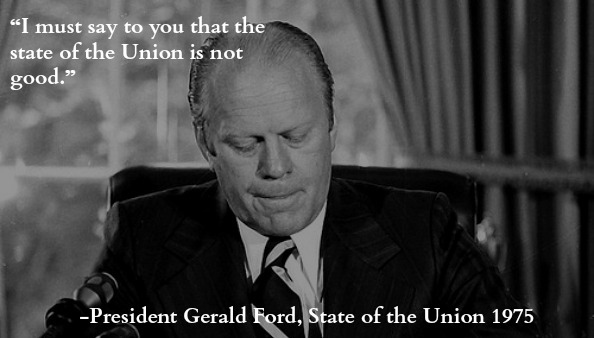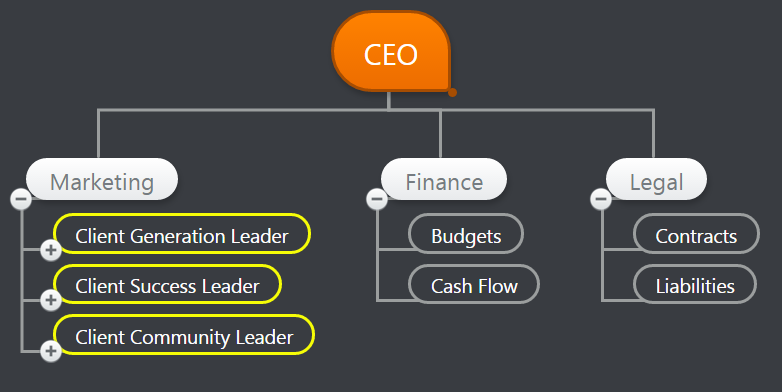For Exhausted CEOs: How to Avoid the Low-Level Tasks and Get Back to Growth

Warning: This conversation is for leaders ONLY
You are the main messenger, rainmaker, and fearless leader. You are responsible for the core strategy and values that drives your business. Your clarity defines the power, impact, speed, virality, and profitability of your business.
...and somewhere along the way you turned into "Chief Firefighter".
You've lost your sense of strategy, vision, and purpose. Now your days are filled with low-level problem solving, un-important daily emergencies, and non-essential tasks filling your email inbox.
How do you back to your real job of leading the business?
There are three essential things required to move you out of firefighting mode and back into strategic growth mode. Read below.
Would you like to eliminate useless tasks from your day? Grow your business without the stress. Free webinar shows a step-by-step process to move from "Chief Firefighter" to "Chief Executive". You can register here - at this link
#1 - You must create a vision others can understand and believe in
Clearly YOU understand the vision, it's your company. You "bought in" a long time ago. But...
How well do your team members understand the vision? Are they in 100%?
How well do your vendors understand the vision? Are they in 100%
How well do your clients understand the vision? Are they in 100%?
No one can understand a vision that is trapped in your head. If you are the only person that understands the big WHY behind what you do, there is no way you can attract great clients, train committed employees, or build a healthy team of suppliers.
Leave No Doubt: Let the Entire Market Know Where You Stand
Your company’s core values should never be in doubt. Your entire community of stakeholders (employees, vendors, and clients) should understand what you value and the role they play in delivering that value.
I have found that most CEOs are in touch with their core values intuitively but don’t have any formalized way to express them. To get to the right words, here is a three-step process to establish core values. Focus on the noise, truth, and beliefs in your market.
Step A: Find the NOISE. This is the irritating static on your car radio that keeps your clients from hearing the music clearly. This is the television show with a panel of pundits discussing daily topics with no new insight. This is the constant media barrage filled with doom and gloom stories that scare your clients, but don’t offer them a next step. This is all the mis-information keeping your BEST client from making a good decision about their situation.
Step B: Focus on the TRUTH. Every marketplace has a set of undeniable facts that must be confronted. For example: air, water, and gravity are undeniable facts for humans. You have to breathe air to fill your lungs. You have to drink water to hydrate your body. You have to respect gravity to keep you from floating off into space. You have to establish a similar set of undeniable facts for your industry.
Step C: State your BELIEFS. Given the noise and truth, there are specific beliefs unique to your company. What do you believe is possible if your clients avoid noise and confront the truth? This is your opportunity to inspire your audience with your unique point of view. Show them vision. Show them possibility. Show them the "light" at the end of the tunnel. What unique experience will they have as a result of your leadership?
For example:
Former United States President Gerald Ford began his 1975 address with a very clear and strong assessment about the status of the nation.

Though brutal, he owed it to his audience to tell them the truth. He supported his assessment with a string of facts, “Millions of Americans are out of work. Recession and inflation are eroding the money of millions more. Prices are too high, and sales are too slow. This year's federal deficit will be about $30 billion; next year's probably $45 billion. The national debt will rise to over $500 billion…”
He would later move on to highlight some encouraging statistics, but it was incredibly important to call out the truth first. You have the same challenge. Objectively state what you see in the marketplace, chart a course of action, and lay out a path of new possibilities.
2 - You must create a marketing model that attracts only the very best opportunities
Have you ever
...walked into a car dealership and asked for the 2nd best car on the lot?
...asked a realtor to show you the 5th best house in their inventory?
...sat down at a restaurant and ordered the 4th best item on the menu?
Of course you haven't. Do you know why? Because...
No one buys the second best option. ...and if your company is seen as the second best option no one is buying from YOU.
People want to associate themselves with the “best” and your stakeholders (employees, vendors, and clients) are no different. This is especially true for clients. Your prospective client is looking for the best solution to his specific problem.
The good news is, in 2016 there are a number of outlets available to clearly paint the picture of how dedicated your company is to being the very BEST solution for clients.
The bad news is, in 2016 the sheer number of outlets available can be overwhelming. This makes it difficult to determine exactly what to say and where to say it.
Still, from a strategic perspective (your perspective) there are 4 essential principles that must be met.
Content Principle I - It all begins with a clear vision. If you aren't clear here, there is no point in writing, publishing, or selling anything. You've got to get clear on the most powerful thing you do and commit to celebrating it. (see step #1 above)
Content Principle II - Your clear vision becomes content pieces. Break the powerful thing you do into steps and each step becomes its own piece of stand-alone content. Each piece of content reveals the depth (and value) of your services so it is easier for prospective clients to envision a deeper relationship with your company.
Content Principle III - The content pieces generate better leads. More people will take interest in your business as you create and distribute content. As you create this steady flow of interest it becomes much easier to capture and qualify leads on an ongoing basis.
Content Principle IV - Better leads make it easier to follow up and close. Once a lead is captured, there should be a simple, effective process for generating a sale. Doing this correctly relieves the need for hard-selling, cold-pitching, or any other manipulative sales tactics.
The entire model is captured in the picture below:

You need a dependable method to attract only the best opportunities. If this is going to happen, every piece of content you create must support your claim as the best-in-class option.
Intuitively you know this, but doing it is a much more difficult (and robust) task.
Attracting best-in-class opportunities doesn't happen on accident. It happens on purpose. You must PLAN for it.
3 - You must create a business model that leverages your time and allows you to lead
You need to create an organizational chart specifically focused on serving clients in the most amazing way possible. (Is there anything else that matters?)
A "typical" organizational chart is not required. The typical structure of CEO, CMO, CTO, CXO, etc is top heavy and unnecessary. It's old-school thinking that creates organizational silos. What's more appropriate (and more important) is that you streamline your business to deliver the highest value for your BEST client.
What's possible when you create a more efficient organizational chart?
You get to keep the org chart simple. It shifts your focus away from titles and toward the functional areas that deliver the most value. You will only hire the people that matter most and it will be clear how each hire adds value to the process.
You get to build an efficient "machine" that creates value for all. Your business should be a machine. Your "machine" should create a high level result consistently and predictably. Your service model should be structured, well-organized, and well-understood by all stakeholders.
You get to promote yourself back into your original leadership position. Your job is to see the big picture, structure the business, and keep it healthy. Bringing efficiency to your org chart allows you to focus on your highest order tasks and avoid the daily "minor" tasks that should be delegated to team members.
A more efficient org chart would look like this:

My encouragement to you is to keep it simple. You can certainly add more elements, but you don't have to. Be sure to structure your business around the value you offer clients and resist the temptation to create typical business silos. An efficient business is a more profitable one. (And isn't that what you want?)
Conclusion:
At the end of the day you have to (re)shape your company in a way that allows you to lead. You've got to leave the weeds, avoid the firefighting and fully shift into the highest order tasks that push the business forward.
If you need help, please reach out. I'd love to have a conversation with you.
Would you like to grow your business without the stress? Eliminate useless tasks from your day. Free webinar shows a step-by-step process to move from "Chief Firefighter" to "Chief Executive". You can register here - at this link
